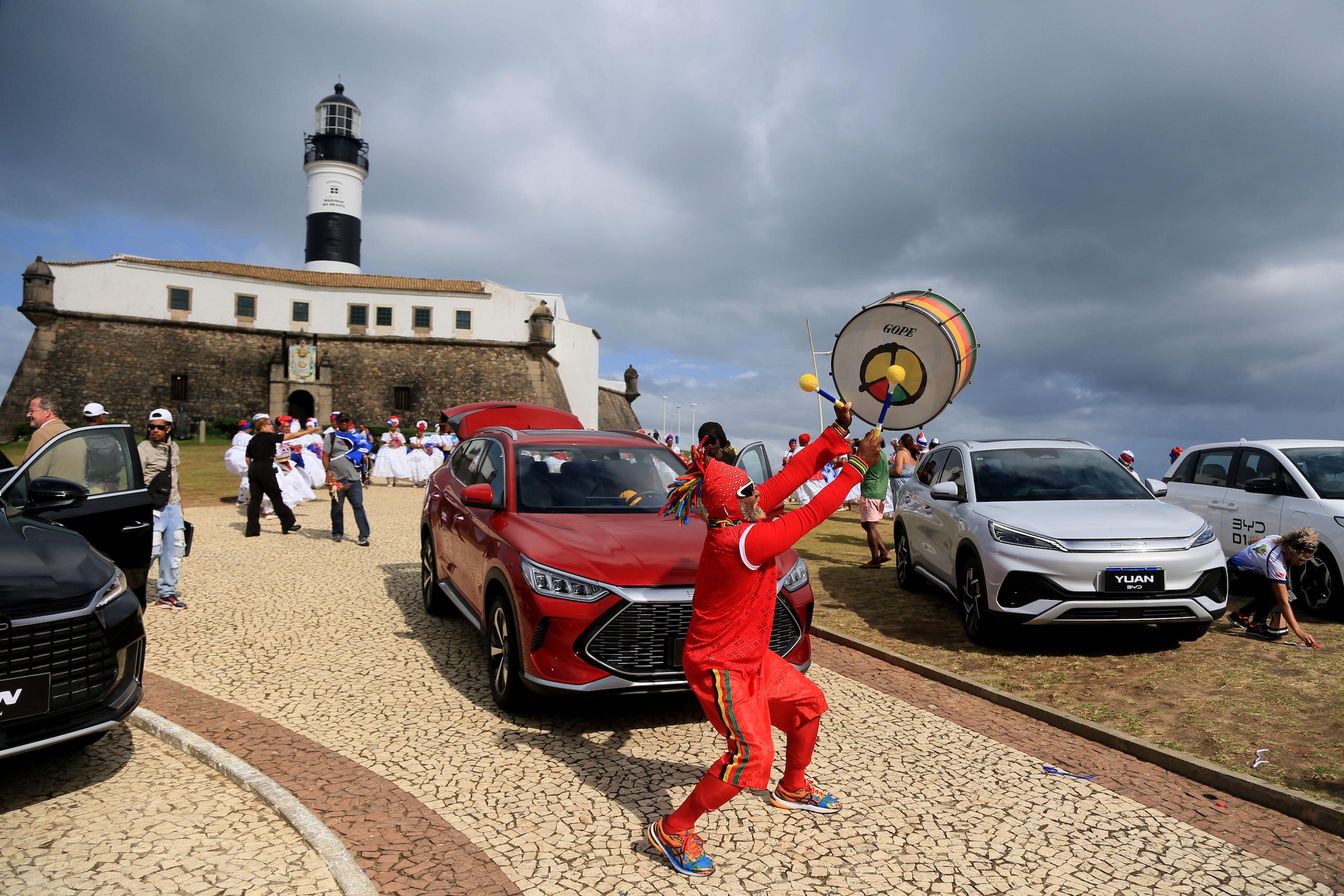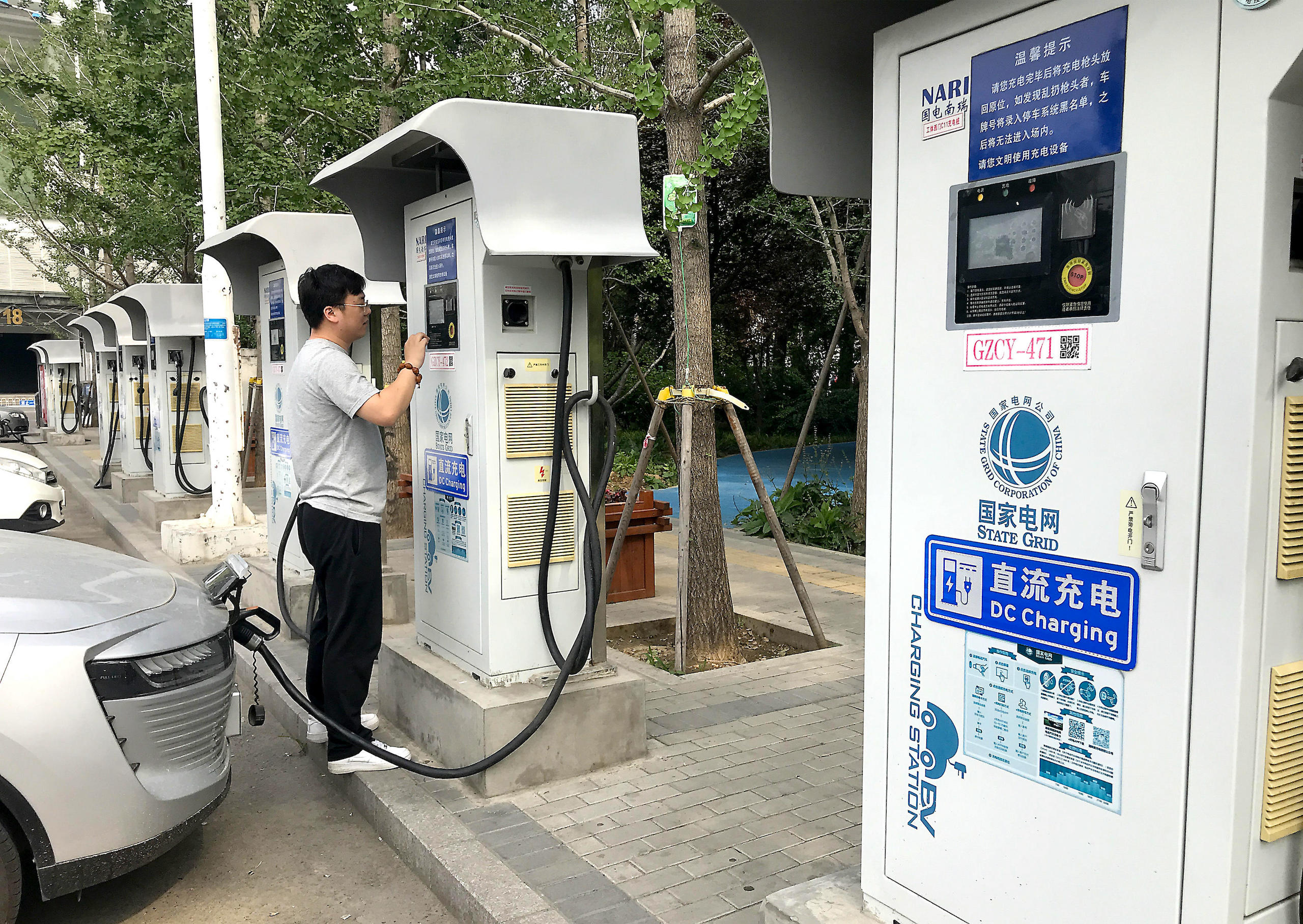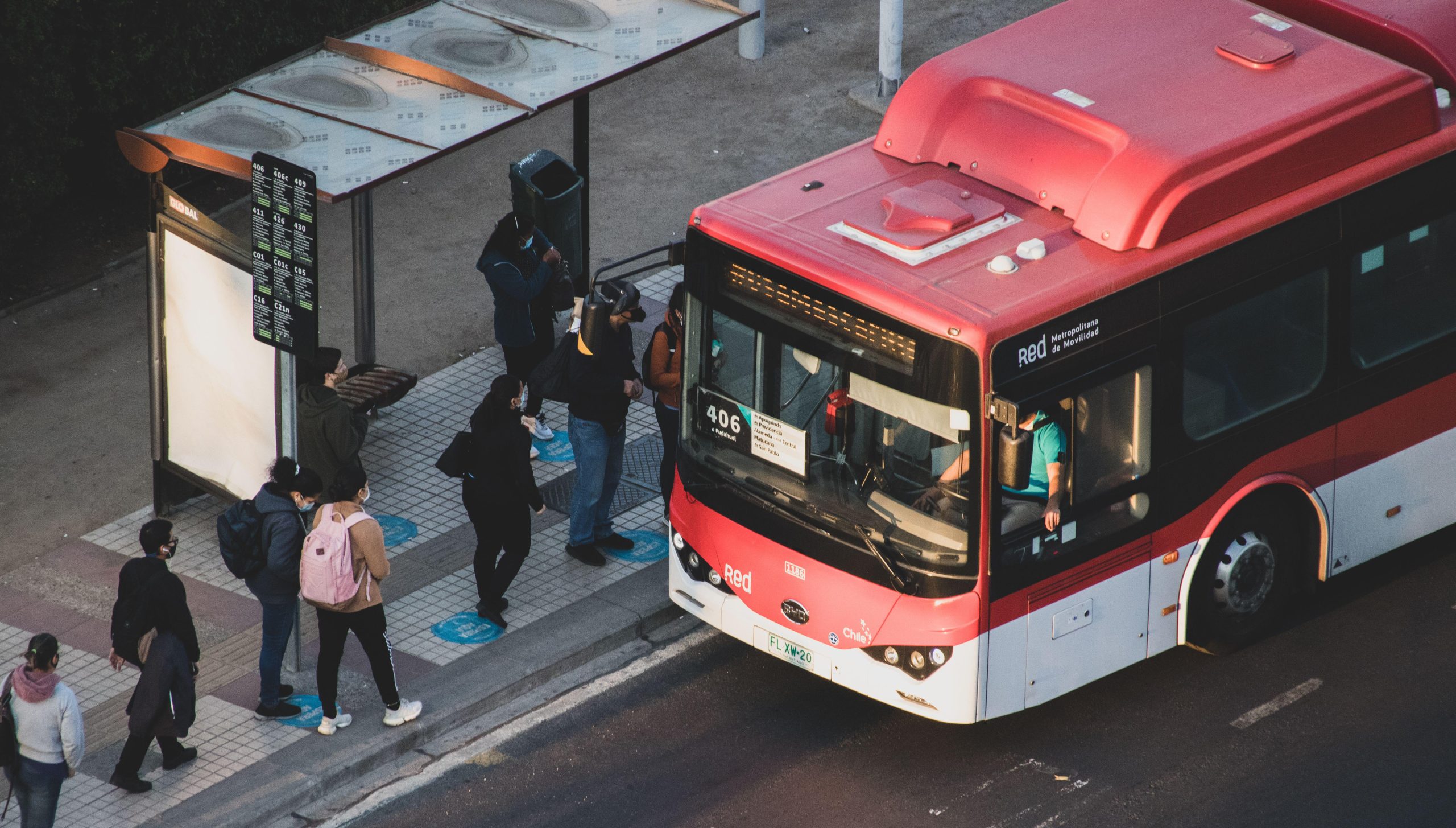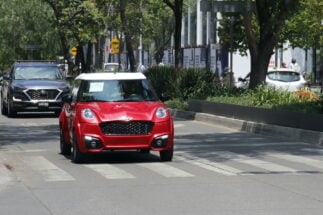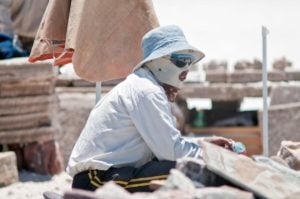Record sales of electric and hybrid vehicles, and a wave of billion-dollar Chinese investments could mark a turning point in Brazil’s automotive industry, and influence its South American neighbours.
Although electric and hybrid vehicles account for only 3.85% of the Brazilian fleet, between January and August, their sales more than doubled on the same period in 2021, a mark that led the Brazilian Association of Electric Vehicles (ABVE) to describe the period as “the eight months that changed electromobility” in the country.
Electric vehicles
Electric vehicle (EV) may be used as an umbrella term to refer to any electrified vehicle, though it is most commonly associated with battery electric vehicles (BEV), which are 100% electrified.
Meanwhile, hybrid vehicles (HEV) combine conventional combustion engines with electric motors.
“When the share [of electric vehicles] approached 5% in other countries, the growth curve became exponential,” said Thiago Sugahara, director of ABVE and ESG manager at Chinese carmaker Great Wall Motors’ Brazilian subsidiary, in a broadcast in July.
In addition to the leap in sales, two major investment announcements have shaken up the Brazilian market.
First, in 2021, GWM acquired a former Mercedes Benz plant in Iracemápolis, São Paulo state, and also announced plans to invest 10 billion reais (US$2 billion) in the country by 2032. Production of hybrid and electric vehicles, including SUVs, is set to begin in 2024.
GWM Brazil’s director of institutional affairs, Ricardo Bastos, told Diálogo Chino that the plant will initially have capacity to produce 50,000 vehicles per year, an output that could eventually rise to 100,000 per year. “For this capacity… we are counting on exports,” he added, with other countries within Latin America the likely destination.
The second major investment was made this year by BYD, the world’s largest manufacturer of electric and hybrid vehicles, and arrived in a somewhat symbolic location for the energy transition: the Camaçari complex in the state of Bahia, one of the largest petrochemical centres in the southern hemisphere.
The agreement took shape during Brazilian president Luiz Inácio Lula da Silva’s visit to China in April, before BYD announced in July the investment of 3 billion reais ($620 million) in three factories within the complex: one to produce chassis for electric buses and lorries, another for hybrid and electric cars, and a third to process lithium and iron phosphate, to be exported for the manufacture of vehicle batteries.
The first 100% Brazilian EV, the BYD Dolphin, will roll out of Camaçari, with the model already ranking as one of the most popular imports in the country. “Brazil is one of the most important automotive markets in the world and, for BYD, it will be the hub of Latin America,” said Alexandre Baldy, an advisor to BYD in Brazil. “It will introduce green tech to the Amazon country, opening up the market to the rest of the region.”
Other notable announcements have arrived in recent years. In 2022, Chinese electric bus manufacturer Higer Bus declared its intention to invest $50 million in a factory in the port of Pecém, in the north-eastern state of Ceará – a region also being targeted for the production of green hydrogen in Brazil. In a meeting with vice-president Geraldo Alckmin, in July, Higer’s Latin America director, Marcelo Barella, said the company wants to make Brazil its export base for Latin America.
Elsewhere, Swedish carmaker Volvo, now majority-owned by Chinese company Geely, announced last year investments of 881 million reais ($181 million) at its plant in Curitiba, Paraná state, earmarked for research and development on decarbonisation. By 2025, Volvo, which has some of the best-selling EVs in Brazil, expects to invest a total of 1.5 billion reais ($308 million) in the country.
Car company representatives consulted by Diálogo Chino spoke of Brazil offering competitive advantages to become a regional hub for electric vehicles. They pointed to the country’s existing auto industry facilities, which already cover diverse stages of production, from the manufacturing of parts to assembly, as well as its predominantly clean energy mix based on hydroelectric power, plus reserves of lithium, which is essential for EV battery production.
China is playing a “crucial” role in the development of the electric vehicle sector in Brazil, according to Paulo Roberto Feldmann, a professor at the University of São Paulo’s School of Economics. However, he cautions that Chinese companies primarily “want our market”. Feldmann adds that it’s “up to the Brazilian government to demand that China transfer technology, support the creation of a national [EV] manufacturer, [and] train engineers.”
China turns to EVs
It is unsurprising that the biggest investments in electric vehicles in Brazil – and Latin America – come from China. Just over a decade ago, the world’s second-largest economy saw in the sector not only the chance to become a global automotive powerhouse, but also to lead the energy transition in a world increasingly feeling the impacts of climate change.
“China realised that this technology had the potential to solve several important problems, such as reducing air pollution, dependence on imported oil, and rebuilding the economy after the 2008 financial crisis,” says Murilo Briganti of Bright, one of the leading consultancies on the automotive market in Brazil.
Since then, China has become the world’s largest market for electric vehicles, and currently accounts for around two thirds of global sales, with one in every four cars sold in China an electric vehicle – a market share that continues to rise. In addition to domestic manufacturers such as BYD and GWM, US-headquartered Tesla, one of the leaders in EV sales, also builds vehicles in China – and manufactures more in Shanghai than at its most productive factory in the United States, in Fremont, California.
China still hosts around 80% of the world’s capacity for refining raw materials for batteries, such as lithium and nickel, and in 10 years has expanded its battery recharging infrastructure by 66 times, with around 2 million public charging points across the country today.
Strong policy support has been a key driver in helping China take the lead in this market, with the Chinese government offering a range of subsidies and tax breaks to the new-energy vehicle industry and consumers. It is estimated that between 2009 and 2022, the government distributed $29 billion in such subsidies and tax incentives.
“One of [China’s] measures was to zero out the tax on the electric car for consumers, making it cost the same as a combustion vehicle,” explains Feldmann.
China’s EV subsidies for buyers formally ended at the start of this year, but a new four-year package of tax breaks, worth a reported $72 billion, was announced in September.
China invests in South America
The fruits of China’s policy support for the electric vehicle industry have spread to other countries. Chinese investment in the global EV market has already increased forty-fold, from a total of $605 million in 2016, to more than $24 billion by 2022.
The automotive sector attracted 28% of Chinese investment in Brazil in 2022, with a total of $365 million, according to a recent report by the China-Brazil Business Council (CEBC). All Chinese projects announced in the sector were linked to EVs and the energy transition, the report notes, whether through the manufacture of electrified buses and cars, or as R&D initiatives.
Brazil is “an important consumer market for vehicles from China,” Tulio Cariello, author of the report and director of research at CEBC, told Diálogo Chino. He added that the country “can serve as a sales hub for Mercosur”, the South American trade bloc Brazil shares with Argentina, Paraguay and Uruguay.
Argentina is also among the South American nations to receive recent Chinese investments in electric transport. In February, Chinese automaker Chery announced plans to build a factory to produce 20 different EV models and lithium batteries in partnership with Gotion, a Chinese battery company; it will be located in northern Argentina, close to the country’s lithium reserves. Together with Bolivia and Chile, Argentina is part of the so-called “lithium triangle”, where two-thirds of the world’s lithium reserves are located.
But just as in Brazil, Argentina’s challenge is to get China to invest in the local industry. “Argentina has the resources, but we have to get China to move forward with us in the development of cells and batteries, as a partner,” said Flavia Royón, secretary of energy in the outgoing government of Argentine president Alberto Fernández.
In 2022, Y-TEC, Argentina’s state-owned energy industry research company, announced that the country would host the first plant to produce lithium batteries in Latin America, set to enter operation before the end of the year. It could boost Argentina’s incipient electric vehicle market: in 2022, only 240 EVs were sold, while the hybrid segment is relatively more developed, with 7,697 units sold in the same period, according to Adefa, Argentina’s car manufacturers’ association.
Next door in Chile, the country has emerged as one of the region’s leaders in the electrification of public transport: one fifth of the 7,400 buses in the public network in the capital, Santiago, are electric, according to a survey carried out by Franco Basso, a researcher at the Catholic University of Valparaíso and a specialist in sustainable mobility. In August, the Chilean government launched a policy to expand the electrification of the bus fleet to four other regions of the country by 2025.
According to Diego Mendoza Benavente, secretary general of Chile’s National Automotive Association, an ongoing programme has offered incentives to taxi drivers to convert many of the country’s cabs to EVs. “The next phase will target inter-urban transport and private vehicles,” he told Diálogo Chino.
The country has set 2035 as its target to ditch new combustion cars and buses, and continues to boost investment in the production of minerals for the energy transition. In October, President Gabriel Boric announced that Chinese company Tsingshan would invest $233 million in a factory in Chile to produce lithium iron phosphate, used in some EV batteries.
Uruguay is also promoting electromobility in public transport through government subsidies. In 2019, CUTCSA, Uruguay’s main public transport operator, purchased 20 electric buses from BYD, and two years later announced that it would not buy any more petrol vehicles for its fleet. “The aim is to renew 25% of the fleet every five years from 2025 until we reach 2040 with the whole fleet renewed,” CUTCSA president Juan Salgado said at the announcement.
Meanwhile, the consumer EV market is growing in the country: sales have increased sevenfold since 2020, with 1,225 vehicles reportedly sold in 2022.
Policies for EVs are lacking in Brazil
While neighbouring countries are implementing national plans to encourage the EV industry, bureaucratic issues in the Brazilian government are said to be holding up the announcement of a programme providing consumer incentives with the aim of decarbonising the transport sector.
“There’s a lot of talk about green mobility, but nothing actually happens,” says the University of São Paulo’s Feldmann. “There is no country that has embarked on an energy transition in the automotive industry without incentives and public investment.”
In addition, the Brazilian government reportedly intends to overturn the current tax exemption offered on the import of EVs – a measure that has been criticised by ABVE.
There is no country that has embarked on an energy transition in the automotive industry without incentives and public investmentPaulo Roberto Feldmann, University of São Paulo’s School of Economics
“Reducing the import tax is a way of encouraging this market in the country. Consumers get to know the product and it encourages the birth of a new ecosystem necessary for future national production,” said Daniel Caramori, director of light vehicles at ABVE and senior manager of government relations at General Motors Brazil. “If the tax increases, it will put the brakes on this market in Brazil and hinder the plans of the companies that are setting up here.”
According to car company representatives who spoke to Diálogo Chino, Chinese makers are hoping that the sector will become a priority on the Lula government’s environmental agenda. One of the important signals was the appointment of Adalberto Maluf, who previously worked at BYD and ABVE, to the National Secretariat for the Urban Environment.
Maluf told Diálogo Chino that his department is working to electrify public transport. He noted that, despite the delays in launching the national green mobility plan, in August the federal government approved the distribution of more than 10 billion reais ($2 billion) to finance the purchase of electric buses, and relaunched a dormant project: the National Platform for Electric Mobility, which brings together government, academia and companies to debate policies for the sector.
“It’s true that there is still no clear policy, but there is plenty of political will,” says Maluf. He suggests that electromobility “will take a leap forward in Brazil in 2024, especially in the bus sector”, pointing to municipal elections that may prompt mayors to pledge to renew their local fleets as part of their campaigns.
The secretary cited plans already underway for bus networks, such as Rio de Janeiro city council’s to electrify 100% of the fleet by 2032, and São Paulo targeting 20% by 2024.
The federal government has also released 368.7 million reais ($76 million) to the government of the northern state of Pará to buy 265 electric and natural gas-powered buses for its capital, Belém. The city is set to host the COP30 climate summit in 2025, and the government is looking to reposition the state – a leader in deforestation – and its capital as a global model for sustainability.
